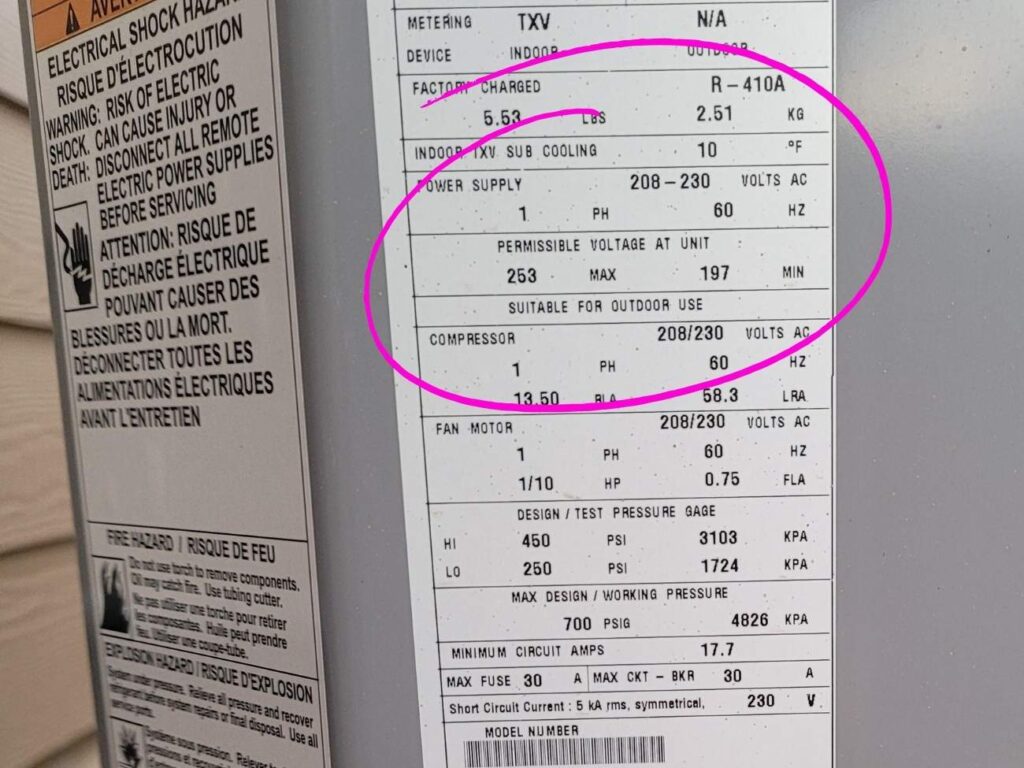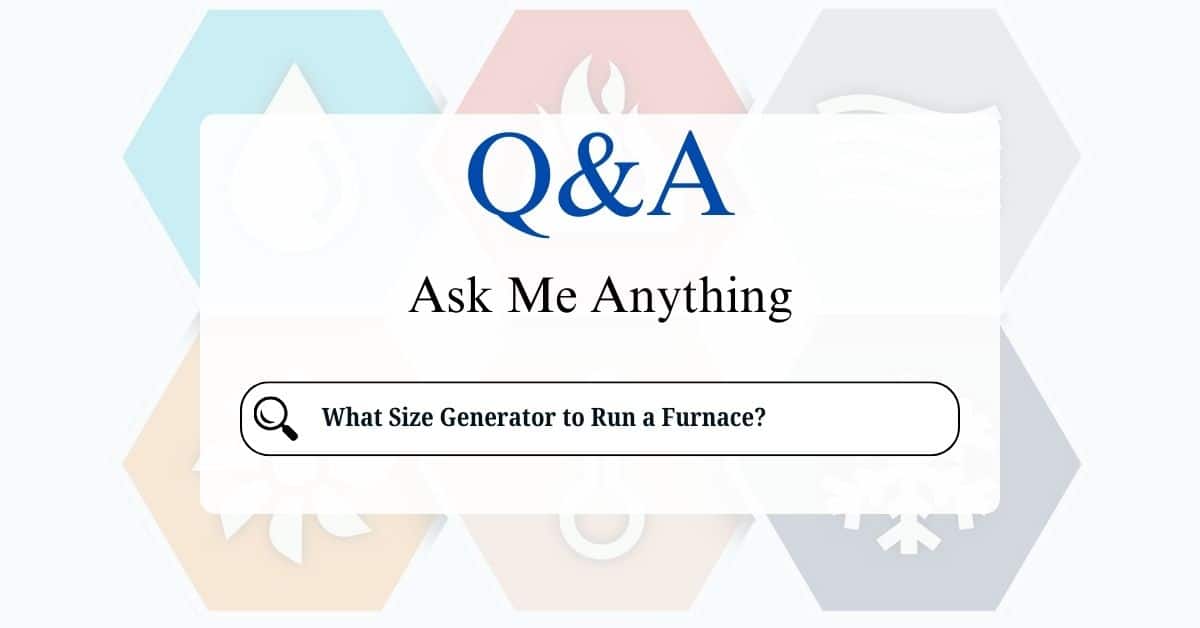When the power goes out during the winter, keeping your home warm becomes a top priority. A generator can save the day by powering essential appliances, including your furnace. But how do you figure out the right size generator to run your furnace? Don’t worry—we’ll break it down step by step in this friendly guide.
A furnace relies on electricity to power key components like the blower motor, ignitor, and control panel. During a power outage, these components can’t function, leaving your home without heat. A generator ensures that your furnace continues to operate, keeping your home warm and your family comfortable.
Finding Your Furnace’s Wattage Requirements
The best place to find your furnace’s wattage information is on the appliance’s nameplate. This is usually a metal tag or sticker located on the furnace itself, often inside the blower compartment. Look for information labeled “Watts,” “Amps,” or “VA” (Volt-Amps).
- If you find Watts: This is the most straightforward. You’ll likely see both running watts and starting watts listed.
- If you find Amps: You’ll need to multiply the amps by the voltage (usually 120 volts for most household furnaces) to get the wattage: Watts = Amps x Volts. For example, if your furnace draws 10 amps, its running wattage is 10 amps x 120 volts = 1200 watts. You’ll still need to estimate the starting wattage (multiply the running watts by 2 or 3).
- If you find VA: Volt-Amps are very close to watts and can be used interchangeably for this purpose.

If your furnace’s nameplate only lists running wattage, you’ll need to estimate the starting wattage. A good rule of thumb is to multiply the running wattage by 3 for furnaces with standard blower motors. For newer, high-efficiency furnaces with ECM (Electronically Commutated Motors) blower motors, the starting wattage may be closer to 1.5-2 times the running wattage.
Example:
Let’s say your furnace has a running wattage of 600 watts.
- For a standard blower motor: Starting wattage would be approximately 600 watts x 3 = 1800 watts.
- For an ECM blower motor: Starting wattage would be approximately 600 watts x 1.5 = 900 watts.
Calculate Total Wattage Needs
Once you know your furnace’s running and starting wattage, you need to consider any other appliances you plan to run on the generator simultaneously. Add up the running wattage of all these appliances. Then, add the starting wattage of the appliance with the highest starting wattage (usually your furnace).
Example:
You want to run your furnace (600 running watts, 1800 starting watts), a refrigerator (800 running watts, 2000 starting watts), and a few lights (200 running watts).
- Total running watts: 600 + 800 + 200 = 1600 watts
- Highest starting wattage: 2000 watts (refrigerator)
- Total wattage needed: 1600 + 2000 = 3600 watts
In this case, you would need a generator with a running wattage of at least 3600 watts. However, it’s always recommended to have some extra capacity, so a generator with a running wattage of 4000-5000 watts would be a safer choice.
Consider Additional Appliances
If you want your generator to power other appliances in addition to your furnace, you’ll need a larger generator. Common items to include are:
- Refrigerator: 600-800 watts
- Lights: 60-300 watts
- Sump pump: 800-1,500 watts
- Phone charger: 10-30 watts
Add up the wattage of all the devices you plan to run simultaneously to find your total power needs. For example:
- Furnace: 1,200 watts (starting)
- Refrigerator: 800 watts
- Lights: 300 watts
Total: 2,300 watts. In this case, you’d need a generator with at least 2,300 watts of capacity.
Choose the Right Generator Size
Generators come in various sizes, and the one you choose depends on your calculated wattage needs. Here are some common options:
- Portable generators (2,000-5,000 watts): Ideal for running a furnace and a few other appliances. These are budget-friendly and easy to transport.
- Mid-sized generators (5,000-7,500 watts): Can power a furnace, refrigerator, lights, and additional appliances like a sump pump.
- Whole-house generators (10,000+ watts): Provide power for your entire home, including high-wattage devices like electric water heaters and air conditioners.
Decide on Fuel Type
Generators can run on different types of fuel, so consider what works best for your situation:
- Gasoline: Readily available but may be harder to store long-term.
- Propane: Cleaner-burning and easier to store but may require a separate tank.
- Natural gas: Convenient if you have a natural gas line, but not portable.
- Dual-fuel generators: Offer flexibility to use either gasoline or propane.
To safely connect your furnace to a generator, you’ll need:
- Transfer switch: This device prevents backfeeding, which can endanger utility workers and damage your home’s electrical system.
- Extension cords: Heavy-duty, outdoor-rated cords to connect the generator to your appliances or transfer switch.
If you’re unsure about installing a transfer switch, hire a licensed electrician to set it up for you.
Before an emergency arises, test your generator to ensure it can handle your furnace and other appliances. Run it for a few minutes with your furnace connected to verify that everything works as expected.
Pro Tips for Choosing and Using a Generator
- Opt for a slightly larger generator: It’s better to have extra capacity than to overload your generator.
- Maintain your generator: Regularly check oil levels, clean air filters, and perform routine maintenance to ensure reliability.
- Store fuel safely: Keep gasoline or propane in approved containers and follow local storage regulations.
- Use your generator outdoors: Never run a generator indoors or in an enclosed space due to the risk of carbon monoxide poisoning.
If you’re unsure about your furnace’s power requirements or how to connect a generator safely, consult a professional HVAC technician or electrician. They can help you determine the right generator size and ensure proper installation.
Choosing the right size generator to run your furnace doesn’t have to be complicated. By understanding your furnace’s power needs, calculating total wattage, and selecting a suitable generator, you can keep your home warm and comfortable during power outages. With the right preparation and a reliable generator, you’ll be ready to face winter’s challenges with ease. Stay safe and warm!






